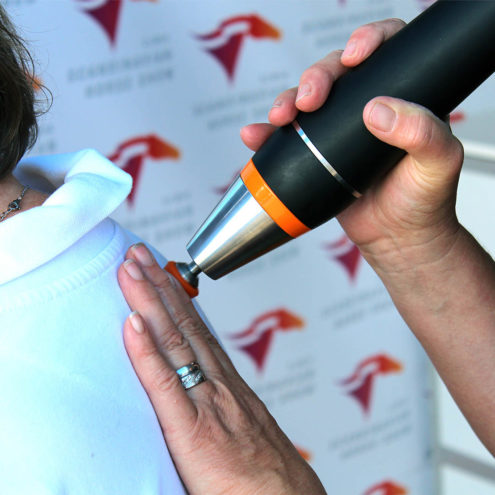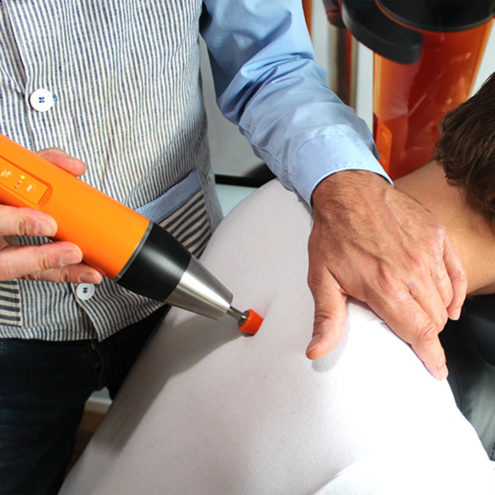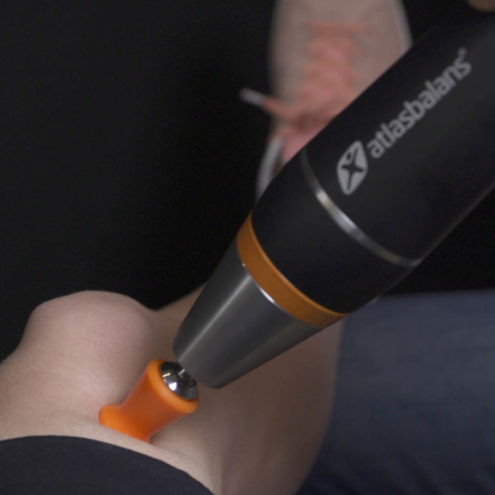Calf Pain – Causes, Symptoms and Treatment

It is common to experience calf pain at some point. It is important to understand the causes of this pain in order to manage and treat it effectively. This article provides an in-depth look at what causes calf pain, common symptoms, treatment methods and how the FasciaClinics can help.
What is calf pain?
Description of calf pain
Calf pain can range from a mild, occasional ache to intense, constant pain. The pain can occur in one or both calves and can feel like anything from a sharp pain to a dull, throbbing ache.
Common causes of calf pain
The causes of calf pain can be many, from simple overexertion to more complex medical conditions. It is important to identify the underlying cause in order to treat the pain effectively.
Why do you get pain in the calf?
Overexertion and injuries
Overuse of the calf muscles, often due to intense exercise or prolonged strain, is a common cause of pain. Injuries such as muscle strains or tears can also cause calf pain.
Angina and blood circulation problems
Reduced blood circulation in the legs, as in the case of angina, can cause pain and cramps in the calves.
Diseases and conditions that cause pain in the calf
Several medical conditions can lead to calf pain. Among these are herniated discs, vitamin D deficiency, sciatica, spinal stenosis, blood clots and atherosclerosis.
Symptoms and sequelae of calf pain
How the pain feels and varies
Calf pain can feel different depending on the cause. It can be a sharp pain that worsens with exertion or a constant ache that affects daily activities.
The connection with other symptoms
Often, calf pain is accompanied by other symptoms such as swelling, redness or warmth in the area, which may indicate inflammation or an underlying disease.
Potential sequelae and serious conditions
In some cases, calf pain can be a sign of more serious conditions, such as deep vein thrombosis or peripheral arterial disease, which require immediate medical attention.
How we at the FasciaClinics can help you
At the FasciaClinics, we treat the body’s fascia system to relieve pain and swelling in the calf muscles. Our approach includes a thorough assessment to identify the cause of the pain and tailor a treatment plan. Fascia treatment reduces tightness and increases circulation so the body can heal faster.
Examinations and diagnostics
Physical examinations and blood tests
To diagnose the cause of calf pain, doctors may perform a thorough physical examination and take the necessary blood tests.
Specialized tests and referrals
In some cases, specialized tests such as ultrasound or MRI may be necessary to identify precise problem areas and causes of the pain.
Treatment methods for calf pain
Medication treatment
Depending on the cause of the pain, different medicines such as painkillers, anti-inflammatories or blood thinners may be used.
Surgical
In some cases, especially in the case of severe injuries or blood clots, surgical interventions may be necessary.
Physiotherapy and exercise
An adapted exercise program and physiotherapy can help relieve the pain and strengthen the calf muscles.
Lifestyle changes and self-care
A healthy lifestyle, including regular exercise, a balanced diet and good foot care, can help prevent and manage calf pain.
Prevention and tips
Physical activity and exercise
Regular exercise and stretching can help prevent overuse and injuries to the calf muscles.
Diet and healthy habits
A healthy diet rich in vitamin D and calcium can help strengthen muscles and bones, while stopping smoking can improve blood circulation.
Regular foot care and ergonomics
Wearing the right shoes and maintaining good posture can prevent many cases of calf pain.
Understanding the causes and treatment options for calf pain is important to manage the pain and improve quality of life. By seeking care early and following a customized treatment plan, individuals can reduce pain and prevent future problems.
FAQ: Calf pain – Causes, Symptoms and Treatment
2. När bör man söka vård för vadsmärtor?
Man bör söka vård om smärtan är ihållande, förvärras, eller åtföljs av andra symtom som svullnad, rodnad, eller värme kring området. Akut smärta, särskilt om den åtföljs av tecken på cirkulationsproblem, kräver omedelbar uppmärksamhet.
3. Vilka symptom kan tyda på en allvarligare underliggande orsak till vadsmärtor?
Symtom som intensiv smärta, svullnad, rodnad, värme i området, eller svårigheter att gå kan indikera allvarligare tillstånd som djupa ventromboser eller perifer artärsjukdom.
4. Vilka behandlingsmetoder finns för ont i vaden?
Behandlingsmetoder inkluderar läkemedelsbehandlingar som smärtstillande och antiinflammatoriska medel, kirurgiska ingrepp vid allvarliga skador eller blodproppar, fysioterapi, träning, och livsstilsförändringar.
5. Hur kan Fasciaklinikerna hjälpa till med vadsmärtor?
På Fasciaklinikerna erbjuder vi behandling med fokus på kroppen som helhet. En fasciabehandling innefattar bland annat en noggrann bedömning för att identifiera orsaken till smärtan och behandla den.
6. Vilka förebyggande åtgärder kan man vidta för att undvika vadsmärtor?
Förebyggande åtgärder inkluderar regelbunden motion och stretching för att stärka och skydda vadmusklerna, en hälsosam kost rik på D-vitamin och kalcium, god fotvård, och att undvika överansträngning.
7. Är det vanligt att vadsmärtor beror på överansträngning?
Ja, överansträngning är en vanlig orsak till vadsmärtor, särskilt bland idrottare och personer som utför högintensiva aktiviteter. Regelbunden träning och rätt teknik kan minska risken för överansträngningsskador.
 Search
Search


































